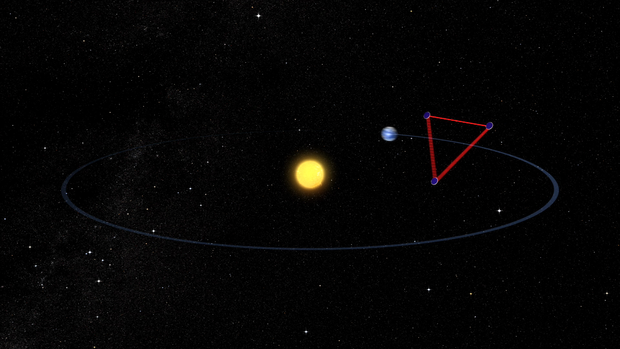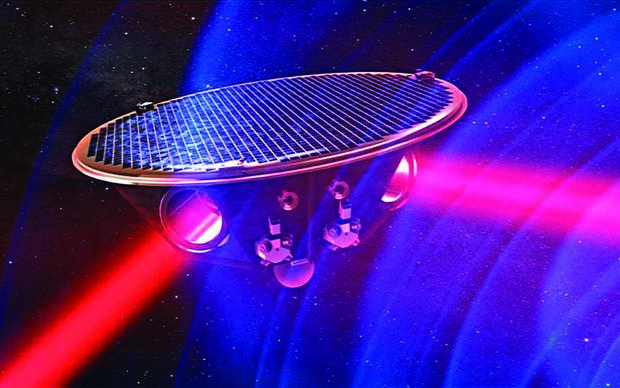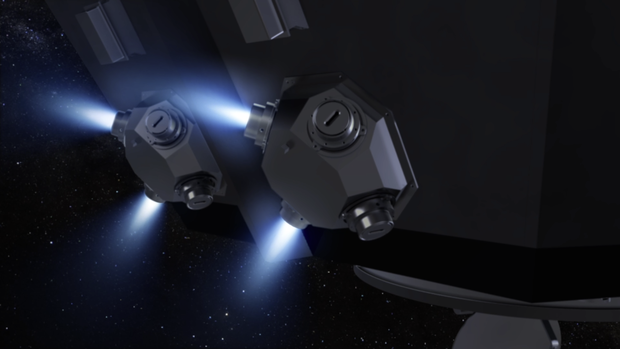Scientists move ahead with gravitational wave detector that will be launched into space
EVANSTON, Ill. (CBS) -- A Northwestern University astrophysicist is part of an international team of scientists creating a gravitational wave detector system that will eventually be launched into orbit in space.
Gravitational waves are ripples in the space-time fabric that were first predicted by Albert Einstein in 1916. They were detected directly on earth nearly a century later in 2015.
On Thursday, the European Space Agency voted to take on the Laser Interferometer Space Antenna – or LISA – as its next mission. The space-based gravitational wave observatory will be placed on a track to be built and launched into orbit the mid-2030s.
As explained by NASA, LISA will be composed of three spacecraft in a triangular configuration. The three spacecraft will be spaced millions of miles apart – and will be tens of millions of miles behind the Earth as they orbit the sun.
The distance between LISA and the Earth will be more than 100 times the distance between the Earth and the Moon, NASA noted.
The three LISA spacecraft will relay laser beams back and forth between one another, and the signals will be combined to search for gravitational wave signatures, NASA explained.
LISA will be able to detect gravitational waves of a lower frequency than those that can be picked up by observatories on Earth, such as the Laser Interferometer Gravitational-Wave Observatory, or LIGO, according to Northwestern.
Shane Larson – a research professor of physics and astronomy at Northwestern and the associate director of the Center for Interdisciplinary Exploration and Research in Astrophysics (CIERA) – is also a U.S. board member on the LISA Consortium, the large group of scientists who are working on the LISA project. He is also co-chair of the consortium's Astrophysics Working Group.
"This is a huge milestone for LISA," Larson said in a news release. "The mission has been designed and planned, and new technology has been built and tested. Today it's official that we're moving forward to construction and launch. This will be the first gravitational-wave observatory in space. It will be the only one of its kind, likely for decades, and will transform the landscape of astronomy."
Larson is also a member of the NASA LISA team, according to Northwestern. He was part of the international team that first detected gravitational waves in a historic discovery announced in February 2016.
Larson's work and research is focused on studying how the evolutionary history of the Milky Way galaxy is imprinted in what is known as the stellar graveyard. His research group simulates the galaxy's population of dead stars, called white dwarfs, which Northwestern said will be one of the main observational sources used for LISA.
Larson also studies how gravitational waves can be used to understand aspects of the universe that cannot be seen by light.
"The gravitational waves that LISA observes will be in a different part of the spectrum than those LIGO observes," Larson said in the release. "LISA will enable us to study completely different astrophysics than other gravitational-wave observatories."
As explained by Northwestern, gravitational waves are caused by the rapid motion of compact objects with high mass – including neutron stars and black holes. LISA will be sensitive to large-scale events such as massive black holes colliding in the centers of galaxies, and smaller binary systems of dead stars composed of white dwarfs, neutron stars, and black holes, Northwestern said.
Northwestern said LISA will also detect gravitational radiation in the unexplored window between 0.1 mHz and 1 Hz, which cannot be detected by ground-based observatories like LIGO.
NASA explained on its page for LISA how the orbiting observatory will be able to detect gravitational waves.
"A bit like the objects moving on the surface of a pond produce ripples and waves, massive objects moving in space distort the fabric of spacetime and produce gravitational waves," NASA stated. "Some of these gravitational wave events will cause the three LISA spacecraft to shift slightly with respect to each other, as they 'ride the gravitational waves,' to produce a characteristic pattern in the combined laser beam signal that depends on the location and physical properties of the source."
The European Space Organization, its member nations, and NASA are building the LISA satellites and their scientific payload.







